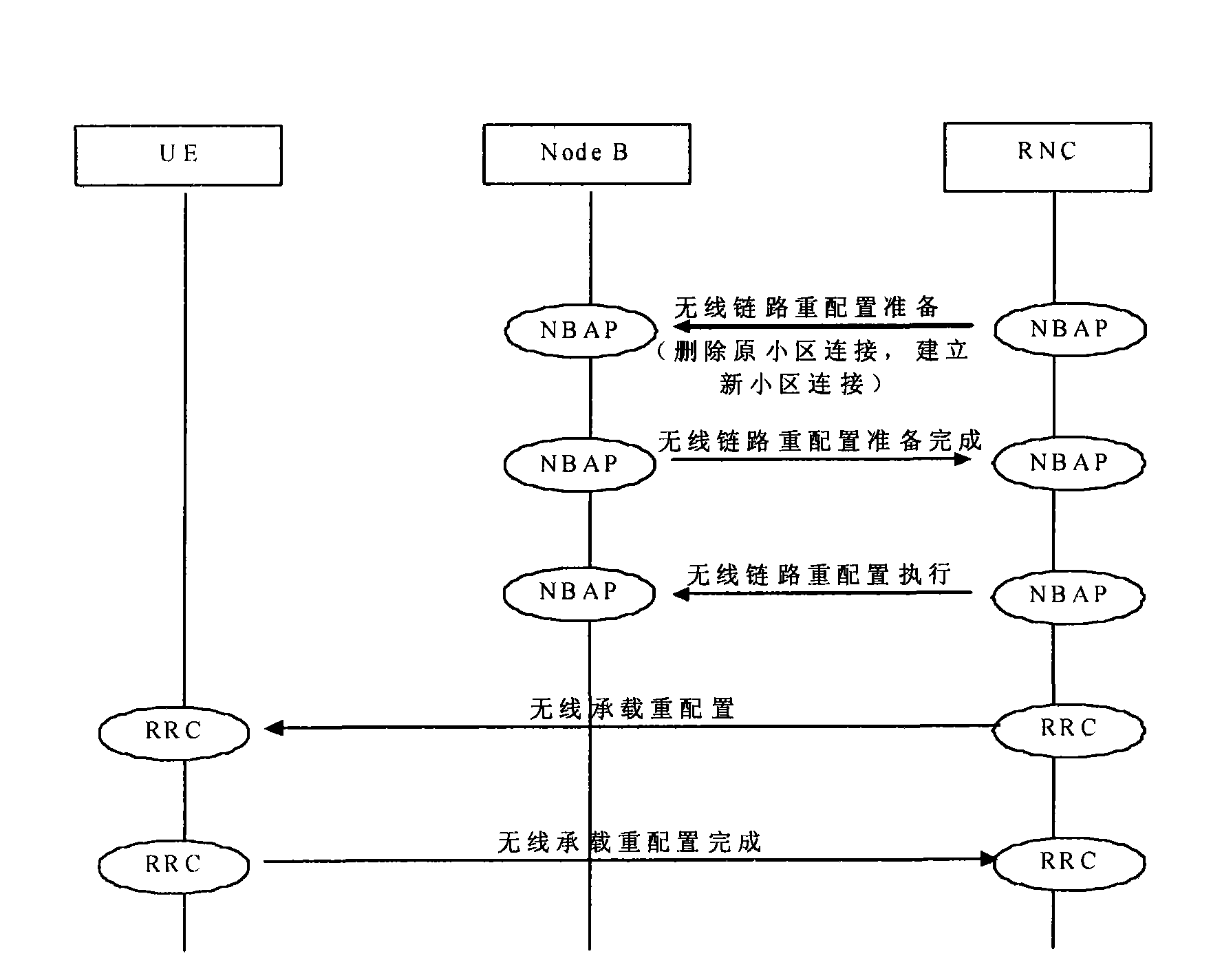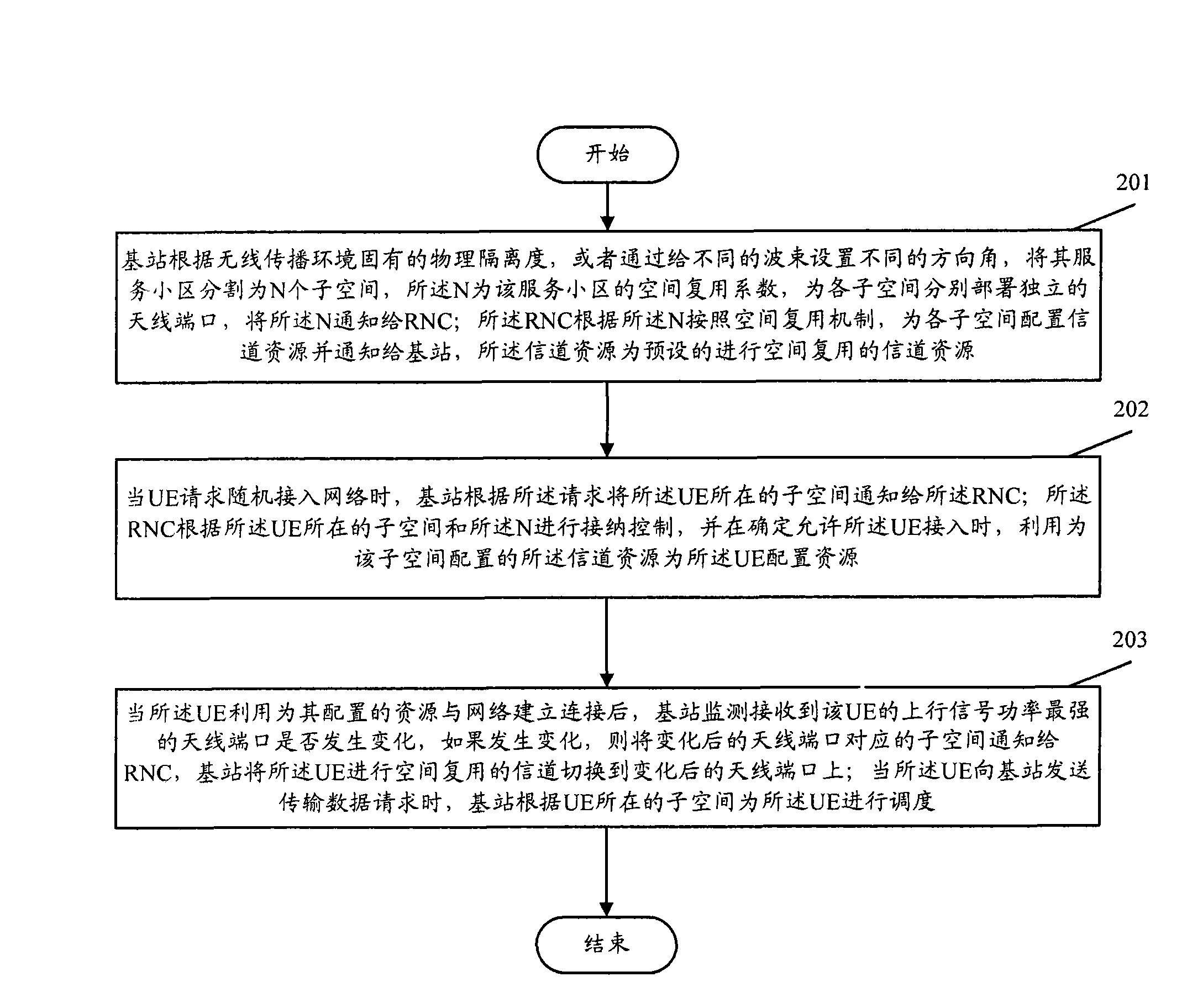Method for improving TD-SCDMA system capacity
A TD-SCDMA, system capacity technology, applied in the field of improving the capacity of mobile communication systems, can solve problems such as reducing equipment use efficiency, maintaining operation and maintenance costs, and depleting wireless resources, and achieves capacity improvement, operation and maintenance costs, and frequency savings. The effect of resources
- Summary
- Abstract
- Description
- Claims
- Application Information
AI Technical Summary
Problems solved by technology
Method used
Image
Examples
Embodiment 1
[0024] In order to make the purpose, technical scheme and advantages of the present invention clearer, the following will be combined with the attached figure 2 The method for increasing the capacity of the TD-SCDMA system of the present invention will be further described in detail through specific embodiments of the present invention. Such as figure 2 As shown, Embodiment 1 of the present invention mainly includes the following steps:
[0025] Step 201, the base station divides its serving cell into N subspaces according to the inherent physical isolation of the wireless propagation environment, or by setting different direction angles for different beams, where N is the spatial multiplexing coefficient of the serving cell, which is Independent antenna ports are deployed in each subspace, and the N is notified to the RNC; the RNC configures channel resources for each subspace according to the spatial multiplexing mechanism according to the N, and notifies the base station...
PUM
 Login to View More
Login to View More Abstract
Description
Claims
Application Information
 Login to View More
Login to View More - R&D
- Intellectual Property
- Life Sciences
- Materials
- Tech Scout
- Unparalleled Data Quality
- Higher Quality Content
- 60% Fewer Hallucinations
Browse by: Latest US Patents, China's latest patents, Technical Efficacy Thesaurus, Application Domain, Technology Topic, Popular Technical Reports.
© 2025 PatSnap. All rights reserved.Legal|Privacy policy|Modern Slavery Act Transparency Statement|Sitemap|About US| Contact US: help@patsnap.com


